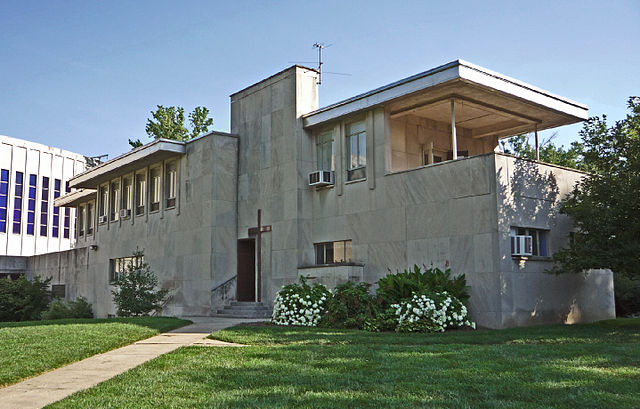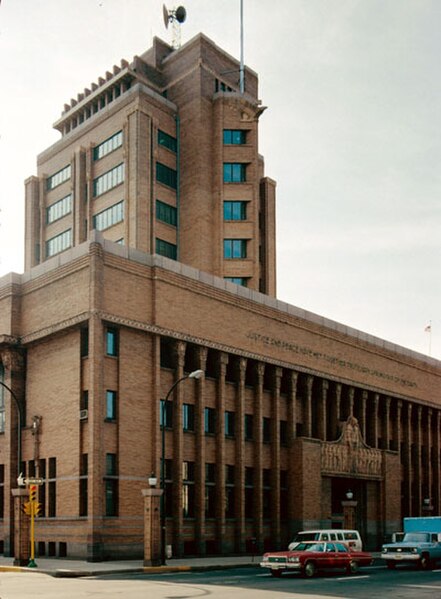Francis Barry Byrne was a member of the group of architects known as the Prairie School. After the demise of the Prairie School, about 1914 to 1916, Byrne continued as a successful architect by developing his own style.
Church of Saint Francis Xavier, Kansas City, Missouri by Barry Byrne (1949), called the "fish church" because of its plan, with statuary by Alfonso Iannelli and stations of the cross by Annette Cremin Byrne; recipient of the American Institute of Architects retrospective award for design excellence in 1987
Church of Saint Francis Xavier, Parish Office, Kansas City, Missouri
Byrne's grave at Calvary Cemetery
St. Patrick's Roman Catholic Church, Racine, Wisconsin (1924)
Prairie School is a late 19th and early 20th-century architectural style, most common in the Midwestern United States. The style is usually marked by horizontal lines, flat or hipped roofs with broad overhanging eaves, windows grouped in horizontal bands, integration with the landscape, solid construction, craftsmanship, and discipline in the use of ornament. Horizontal lines were thought to evoke and relate to the wide, flat, treeless expanses of America's native prairie landscape.
Chicago Avenue side of architect Frank Lloyd Wright's home and studio in Oak Park, Illinois, showing post-1911 changes to studio building.
Robie House, 1910. It is considered by many to be the quintessential Prairie house
Harold C. Bradley House, Madison, Wisconsin, by Louis Sullivan and George Grant Elmslie
Woodbury County Courthouse, Iowa, by William L. Steele and Purcell and Elmslie (associate architects)








